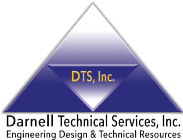When it comes to infrastructure projects in California, choosing the right design and drafting software can significantly impact project success. Among the leading tools in the industry, AutoCAD and MicroStation stand out as powerful platforms for engineers, architects, and project managers. Both offer robust capabilities, but understanding their differences is key to selecting the best fit for your project’s specific needs. This post will compare AutoCAD and MicroStation across critical features, including 2D/3D design, interoperability, user experience, and industry use cases, to help you make an informed decision.
Overview of AutoCAD and MicroStation
What is AutoCAD?
AutoCAD, developed by Autodesk, is one of the most widely used computer-aided design (CAD) software solutions in the world. Known for its versatility, AutoCAD excels in creating precise 2D drawings and complex 3D models. Its extensive library of tools, coupled with regular updates, has made it a go-to choice for a broad range of industries, from architecture and construction to mechanical and civil engineering. AutoCAD’s wide adoption means new users can take advantage of a wealth of resources, training, and community-driven knowledge.
What is MicroStation?
MicroStation, developed by Bentley Systems, is another robust CAD tool that caters primarily to infrastructure and civil engineering projects. Praised for its advanced 3D modeling capabilities and high adaptability, MicroStation is often used in large-scale public works, transportation, and utility projects. It offers strong integration with Bentley’s suite of engineering software, such as OpenRoads and OpenBuildings, making it ideal for projects that require a seamless flow of data across multiple disciplines.
Comparing Features of AutoCAD and MicroStation
2D and 3D Design Capabilities
Both AutoCAD and MicroStation are exceptional in 2D and 3D design, but their strengths lie in different areas. AutoCAD offers unparalleled precision and customization in 2D design, making it ideal for drafting layouts, diagrams, and schematics. Its parametric modeling tools enable engineers to develop highly detailed 3D structures, which are essential in architecture and mechanical engineering.
MicroStation, on the other hand, shines in complex 3D modeling for infrastructure projects. Its ability to handle large sets of data and create intricate designs for railways, highways, and utilities makes it invaluable for public infrastructure development. Additionally, MicroStation’s 3D visualization tools provide superior rendering capabilities, helping stakeholders better understand project concepts before construction begins.
Interoperability and Compatibility
Interoperability is a critical factor for engineering teams managing multidisciplinary projects. AutoCAD is widely recognized for its compatibility with a range of file formats, including its native DWG and DXF files, as well as third-party software. Many companies value AutoCAD’s ability to integrate seamlessly into existing workflows, including Building Information Modeling (BIM) platforms like Revit.
MicroStation is similarly versatile, with strong support for DWG, DXF, and DGN files (its native format). However, where MicroStation truly excels is in its integration with Bentley Systems’ larger ecosystem. For example, infrastructure professionals can pair MicroStation with Bentley-specific tools for geospatial analysis, road design, and structural engineering, offering a cohesive environment for large-scale projects.
User Interface and Learning Curve
AutoCAD provides a highly customizable interface that can be tailored to users’ specific preferences. Its toolbar layout, command-line options, and a vast library of shortcut commands make it particularly appealing for experienced CAD users. However, beginners may find AutoCAD’s interface somewhat overwhelming, requiring time for training and practice.
MicroStation’s interface, while not as widely used as AutoCAD’s, is designed with ease of data organization in mind. Its ribbon-style layout and emphasis on project navigation streamline workflows for civil and infrastructure engineers. MicroStation also benefits from detailed documentation and support, though new users may require guidance to unlock its full capabilities.
Industry Use Cases
AutoCAD in California Projects
AutoCAD’s versatility makes it popular across diverse industries in California. Its precision and efficiency are well-suited for architectural designs, urban planning, and mechanical engineering. For example, architectural firms in Los Angeles often rely on AutoCAD for residential and commercial building designs. Its adaptability also makes it a staple for private-sector projects where cost-effective, accurate 2D drafting is essential.
MicroStation in California Projects
MicroStation, on the other hand, plays a prominent role in California’s public infrastructure projects. Thanks to its advanced data-handling capabilities, MicroStation is an excellent choice for large-scale transportation networks, utility grids, and water management initiatives. Civil engineers working on projects like the California High-Speed Rail or municipal utility expansions often select MicroStation due to its ability to manage and analyze spatial data efficiently.
Skilled Technical Staff Make the Difference
One of the key factors in maximizing the potential of either platform lies in having skilled technical staff who are proficient in AutoCAD, MicroStation, or both. Professionals familiar with these tools bring a wealth of knowledge, experience, and best practices that can streamline workflows, reduce errors, and enhance project outcomes. Whether you’re hiring temporary staff for project-based work or building a long-term engineering team, leveraging expertise in these CAD tools ensures your projects stay on time and within budget.
Choosing the Right Tool for Your Next Infrastructure Project
Selecting between AutoCAD and MicroStation depends on the specific needs of your project. AutoCAD’s extensive reach, customization, and precision make it a strong choice for architectural designs and smaller-scale projects. MicroStation’s capabilities in handling large datasets, advanced 3D modeling, and integration with Bentley’s ecosystem make it ideal for complex infrastructure in transportation and utilities.
Both tools are powerful and can elevate California infrastructure projects to new heights when deployed effectively. Understanding your project requirements and partnering with skilled professionals ensures you get the most from your chosen platform.
Looking for Trusted Technical Talent or Project Support?
At Darnell Technical Services, we connect companies with skilled professionals in engineering, architecture, and infrastructure. Whether you need temporary staffing or long-term project support, we’re here to help you succeed.
📞 Contact us today at Corporate (714) 285-0082 or Las Vegas Office (702) 829-8446 — let’s build something great together.








